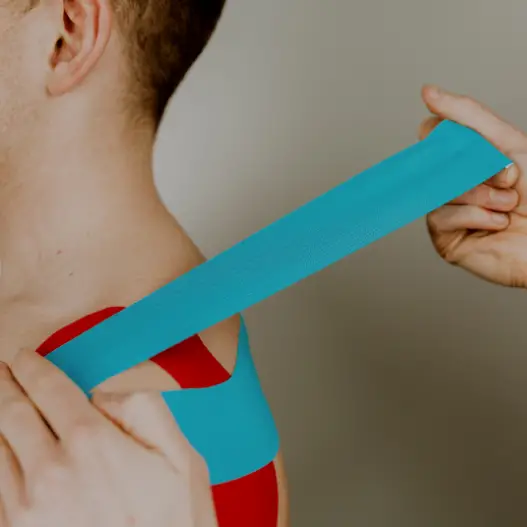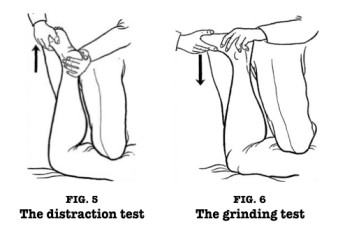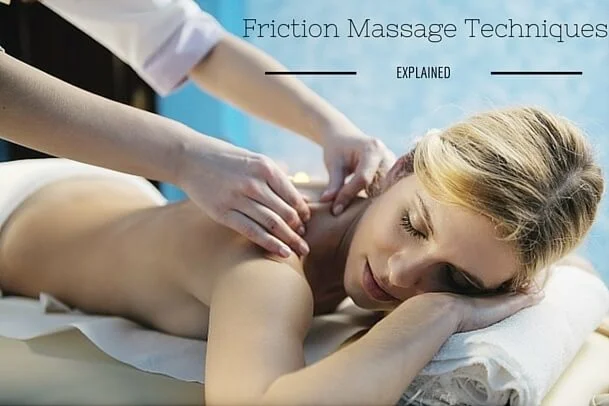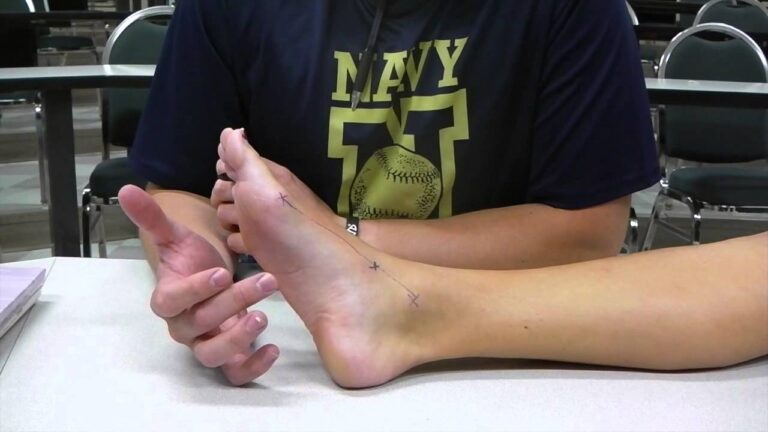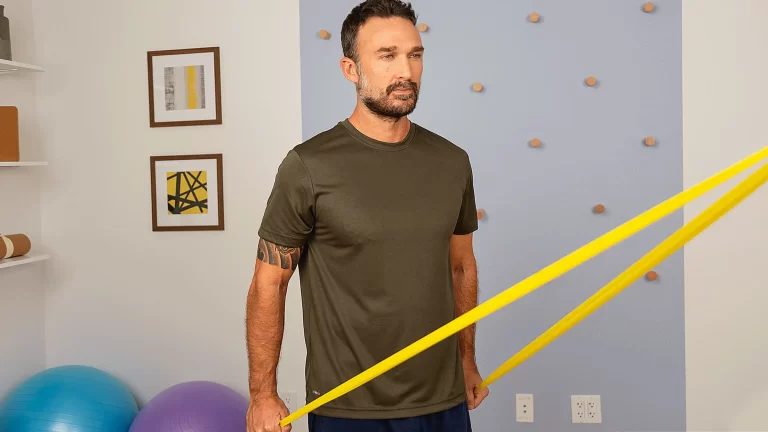Tapping Technique For Supraspinatus Tendinitis
Introduction
In the 1970s, a Japanese chiropractor, Dr.KENZO KASE started using a unique type of taping method that led to the development of a new form of sports tape.
Kinesio taping is also known as elastic bandage.
Therapeutic taping as an adjunct to treatment for various musculoskeletal conditions.
Kinesio taping provided higher, similar, or lower pain reduction.
Anatomy of Supraspinatus Muscle
- ORIGIN: Supraspinuos fossa
- INSERTION: Greater tubercle of humerus
- ACTION: Initially abduction
SUPRASPINATUS TENDINOPATHY
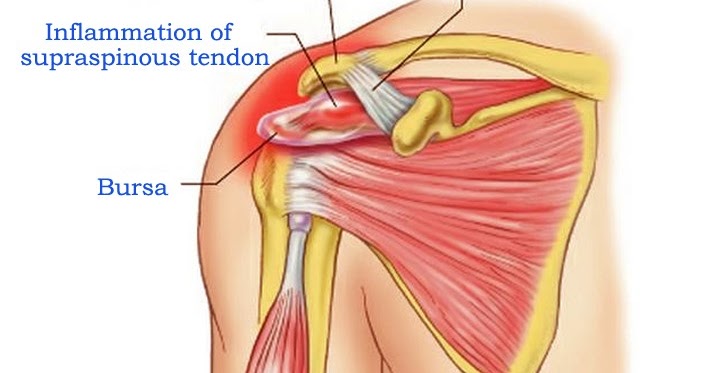
SUPRASPINATUS TENDINOPATHY
- It is a common source of shoulder pain in athletes who participate in overhead sports (handball, volleyball, tennis, baseball).
- This tendinopathy is in most cases caused by an impingement of the supraspinatus tendon on the acromion as it passes between the acromion and the humeral head.
- The supraspinatus muscle assists abduction of the arm and stabilization of the humerus head during arm movements.
- within the supraspinatus muscle elicit a referred pain felt as deep pain around the shoulder, particularly over the mid-deltoid region
SUPRASPINATUOS TENDINITIS
- Supraspinatus tendinopathy is a common and disabling condition that becomes more prevalent after middle age and is a common cause of shoulder pain.
- A predisposing factor is resistive overuse.
- The supraspinatus tendon of the rotator cuff is an affected tendon of the musculoskeletal system and becomes degenerated, most often as a result of repetitive stresses and overloading during sports or occupational activities.
- The tendon of the supraspinatus commonly impinges under the acromion as it passes between the acromion and the humeral head.
- This mechanism is multi-factorial.
Mechanism Of Tapping
- As with acupuncture and acupressure, tapping involves the body’s energy meridian points, which are a concept in Chinese medicine.
- Proponents believe them to be areas of the body through which energy flows.
- In this theory, blocks or imbalances in the flow of energy lead to ill health.
- Taping is commonly used as an adjunct or temporary technique.
- Athletes often make use of taping as a protective mechanism in the presence of an existing injury.
- Some of the goals with taping are to restrict the movement of injured joints, and soft tissue compression to reduce swelling.
- support anatomical structures,
- Taping is used as one of the means of rehabilitation or prophylaxis in instances where support and stability are needed, as a first-aid tool, for the prevention of injury and protection of an injured anatomical structure while healing is taking place
TYPES OF TAPPING
1) KINESIO TAPPING

- Kinesiology taping (KT) is a therapeutic tool and has become increasingly popular within the sporting arena.
- Taping has been used for a long time for the prevention and treatment of sporting injuries.
- KT is not only used for sporting injuries but for a variety of other conditions.
- It was developed by Japanese Chiropractor Dr. Kenzo Kase in the 1970s with the intention to alleviate pain.
- improve the healing of soft tissues.
- There are many proposed benefits to KT, including proprioceptive facilitation;
- Reduced muscle fatigue; muscle facilitation; reduced delayed-onset muscle soreness; pain inhibition; enhanced healing, such as reducing edema, and improvement of lymphatic drainage and blood flow.
2) MULLIGAN TAPPING
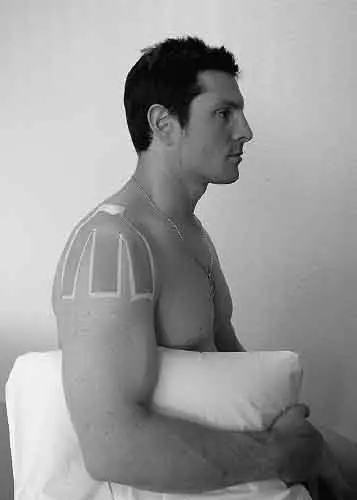
- Mobilization with Movement (MWM) developed by Brian Mulligan FNZSP (Hon) of New Zealand is recognized worldwide in manual therapy approaches.
- His concept is the application of manually applied accessory joint glide with concomitant pain-free active movement.
- During the development of MWMs, Brian Mulligan discovered that treatment in some patients was enhanced when he utilized taping to compliment the directional forces provided after the MWM treatment bout.
- Taping is applied in directions that complement the applied MWM passive force to joint or soft tissue.
3) MECCONNEL TAPPING
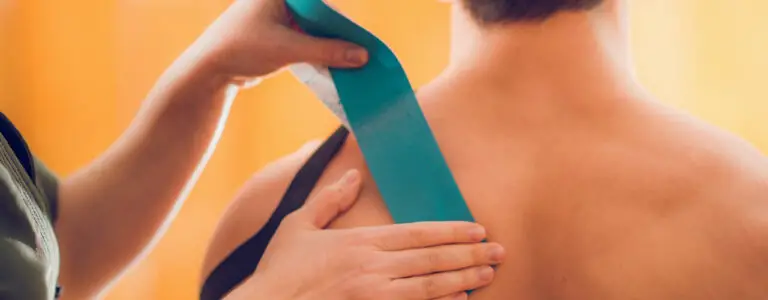
- McConnell taping (also known as Patellar Taping) is often used to treat patients with anterior knee pain, more specifically with patients with Chondromalacia Patellae and Patellofemoral Pain Syndrome).
- The tape corrects the tracking of the patella within the patellar groove by medializing the patella.
- The technique also stretches lateral soft tissues and strengthens the vastus medialis obliques.
BASIS APPLICATION OF TAPPING
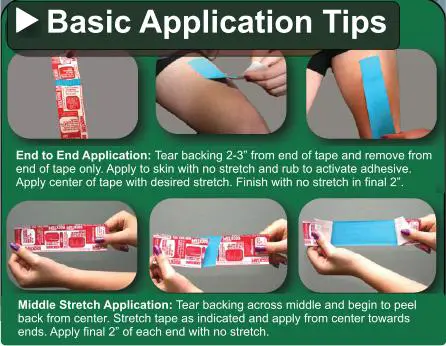
- Ensure to thoroughly assess the patient in order to identify the most appropriate application.
- Do NOT apply tape to any area of skin that is damaged by: scrapes; cuts; burns; sunburn or any type of skin rash/irritation.
- The skin should be free of oils and lotion prior to application.
- If body hair is limiting adhesion you may need to trim or shave the area.
- Do NOT apply with excess tension. (as with zinc oxide application)
- If the patient has been exercising, ensure perspiration has completely stopped before application.
- If you are using a roll of tape, measure and cut carefully.
- Round all the edges of the tape to prevent premature peeling.
- Avoid touching the adhesive side of the tape after removing the backing as this may decrease the adhesive strength on the skin.
- Once the tape is applied, activate the heat-sensitive glue by rubbing up and down the surface of the tape.
- Wait at least 1 hour after application before engaging in an activity that causes sweating.
- Do not swim or shower for at least 1 hour after application.
- To dry the tape after exercising, swimming, or a shower, pat gently with a towel.
AIMS OF TAPPING
- Stabilize or support an injury.
- Relieve pain by de-loading vulnerable or painful structures.
- Facilitate normal movement, muscle action, or postural patterns.
INDICATION OF TAPPING
1-Joint Pain {{ Arthritis, bursitis, lupus, degenerative joints, poorly aligned joints, joint instability}}}
2-Muscle Pain {{ Torn muscles, pulled/strained muscles, tight muscles, fibromyalgia, muscle spasms, muscle cramps, calf strain, pulled hamstring, groin strain, strained gluteals, abdominal strain}}
3-Soft Tissue Injuries {{Tendinitis, tennis elbow (lateral epicondylitis), golfers elbow (medial epicondylitis), patellar tendinitis, Achilles tendinitis, whiplash, back strain, neck strain, rotator cuff injuries, iliotibial band syndrome (ITB)}}}
4-Joint Injuries {{{ Joint sprains, dislocated joints, sprained ankle, sprained knee, sprained wrist, sprained elbow, degenerated meniscus, torn cartilage, unstable joints, joint hypermobility
5-Overuse Injuries Carpal tunnel, repetitive stress syndrome, shin splints, Iliotibial Band Syndrome, tension headaches
6-Swelling and Edema Lymphedema, swollen joints, edema, lymphatic congestion, chronic joint or muscle inflammation
7-Postural Problems Poor posture, round shoulders, scapular instability, muscle weakness, muscle imbalance, poor muscle tone, hypotonia
8-Recovery from Surgery Athletic injury surgery, reconstructive surgery, joint replacement surgery, meniscus repair, ligament surgery, tendon surgery, lymph node removal
9-Bruising Bruising following injuries or surgery, contusions
10-Foot Pain Plantar fasciitis, fallen arches
Summary is
- Re-educate the neuromuscular system
- Reduce pain
- Enhance performance
- Promote improved circulation and healing
CONTRAINDICATION
- malignancy
- infection
- cellulitis
- open wound
- DVT (Deep Vein Thrombosis)
PRECAUTION
- Diabetes
- congestive heart failure
- fracture
DIFFERENT TYPES OF APPLICATION
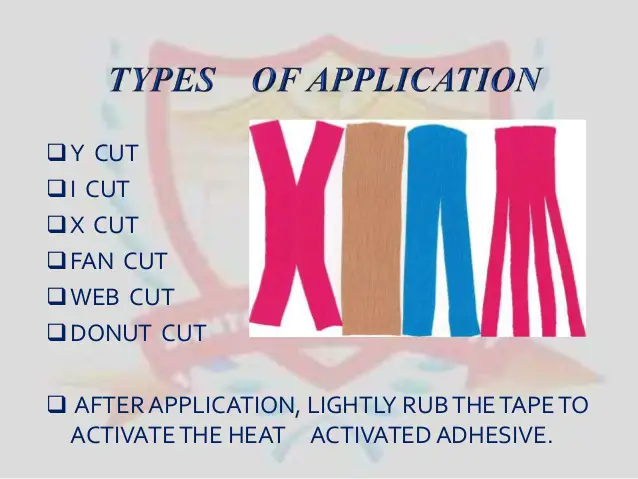
KT can be applied in the shape of a ‘Y’, ‘I’, ‘X’, ‘Fan’, ‘Web’, or ‘Donut’.
The shape selection depends on the size of the affected muscle and the result you are trying to achieve.
CLINICAL IMPLICATION
- Level of evidence – weak
- What does the evidence support?
- Increase ROM
-Increase in Function
-Decrease Oedema/Swelling
APPLICATION OF KINESIO TAPING
- The skin will be cleaned properly with alcohol.
- The first strip will be applied in a Y-shape (15-20% stretch) surrounding
the deltoid muscle to provide inhibition and muscle relaxation. - A second strip (I-shape) will be applied for functional correction (50-75% stretch),
passing over the supraspinatus, trapezius, glenohumeral joint, and middle deltoid. - Daily Strengthening Exercises (3 sets / 10~30 reps) Joint mobilization.
(3 sets / 60 seconds hold / 30 seconds interval) - Stretching Exercises (3 sets / 30 seconds hold / 30 seconds interval.
PATIENT AFTERCARE ADVICE
~ If the tape makes symptoms worse then take it off
~If the tape starts to come off then rub it to re-activate the tape adhesive
~Do NOT dry it with a hairdryer
HOW TO REMOVE KINESIO TAPE
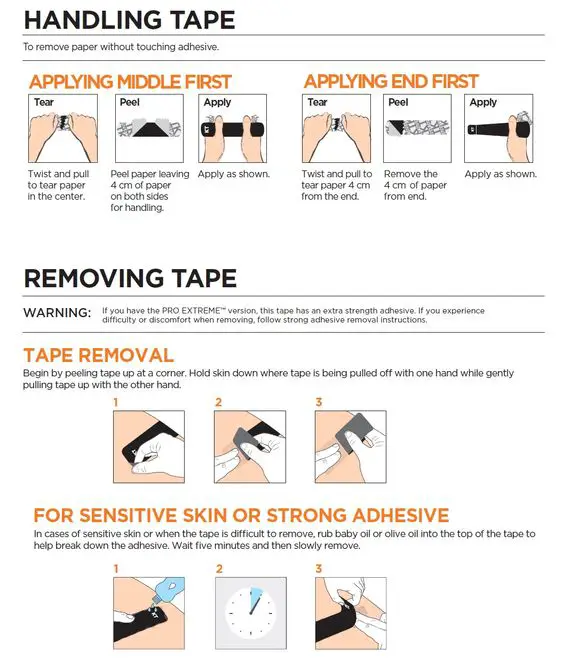
- So now you’ve got your tape on and you’ve gotten that extra support during your
- chosen sporting activity, it’s time to take it off,
- so let us ease the process of removing kinesiology tape for you.
#The best tip we can offer when it comes to removing your kinesiology tape is to peel the skin from the tape, not the tape from the skin.
#But in terms of the actual process, firstly make sure you’re removing
the tape in the same direction as the growth of the hair underneath it, and whatever you do don’t rip the tape off like a plaster!
# Start slowly, folding the corners of the edge back gradually, ensuring that you’re laying the removed tape on the back of the applied tape, as opposed to pulling the tape above and away from your arm.
# As you’re peeling off the tape, hold your skin down with your other hand and either tap it, or pull it gently in the opposite direction of the tape.
This helps the skin and the tape to separate more efficiently but with no discomfort.
- If the tape has been applied over a particularly hairy part of the body,
- it helps to press down on the tape as you are peeling it off, as the pressure helps avoid further pain.
- It’s wise to have shaved the area before applying the tape but, as this isn’t always practical, taking this precaution will be necessary to some.

